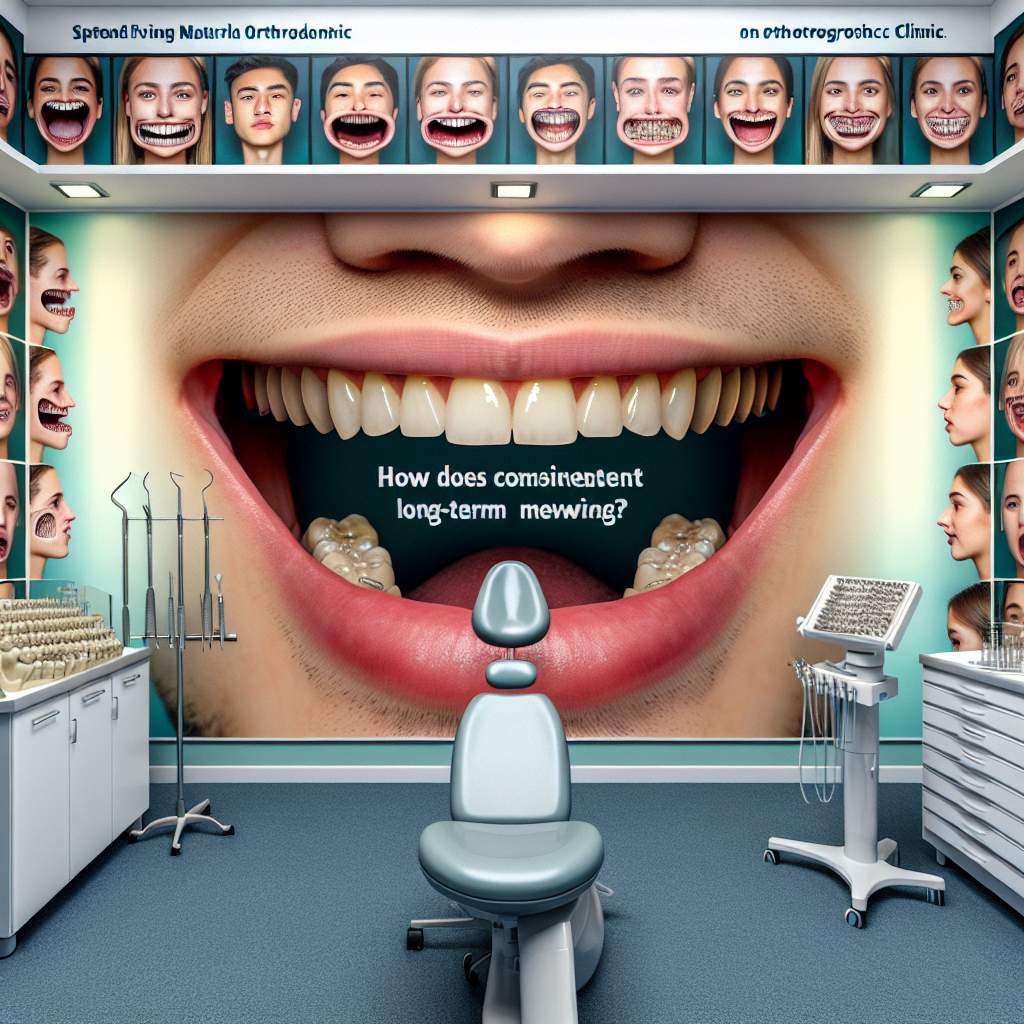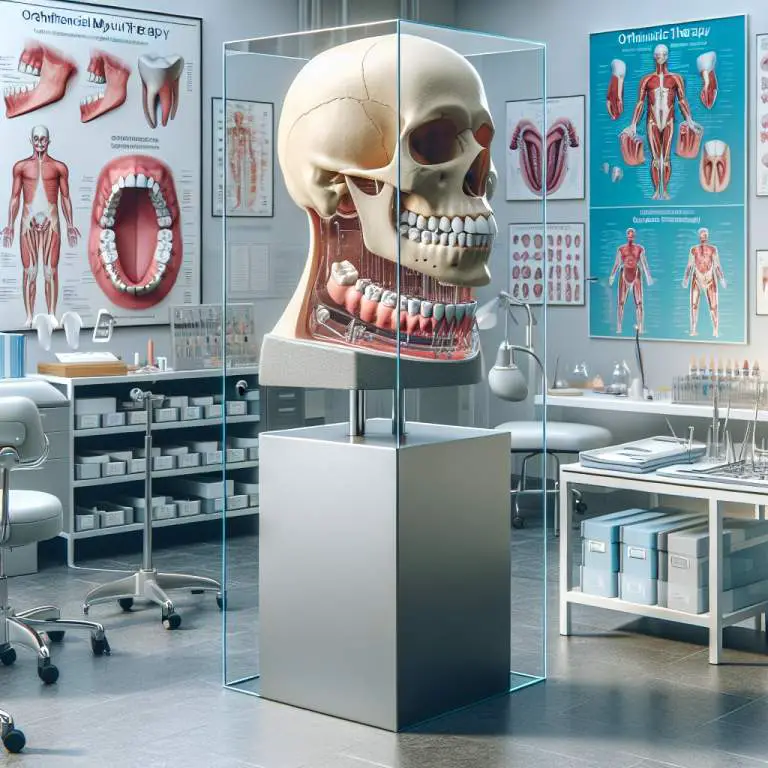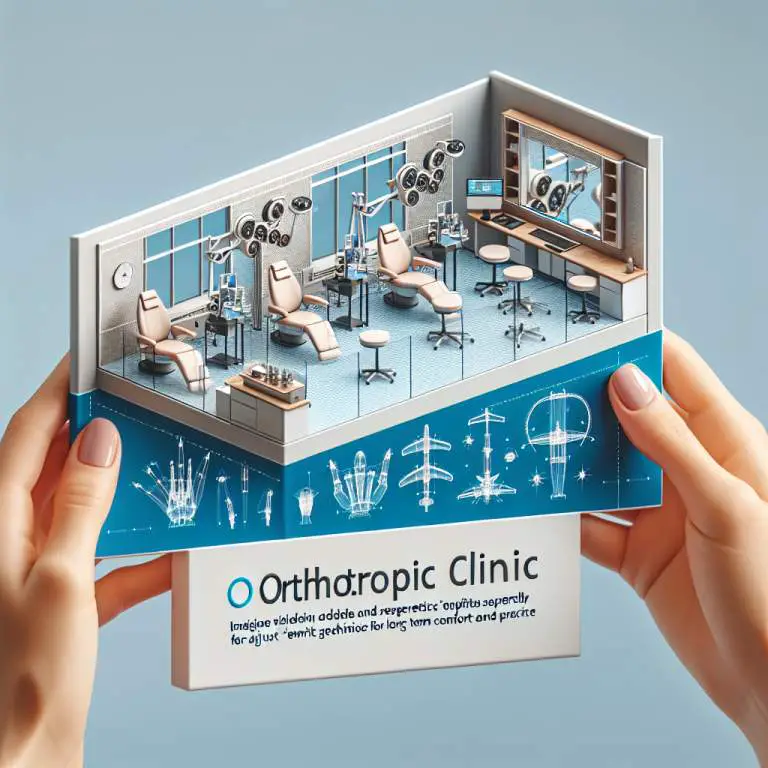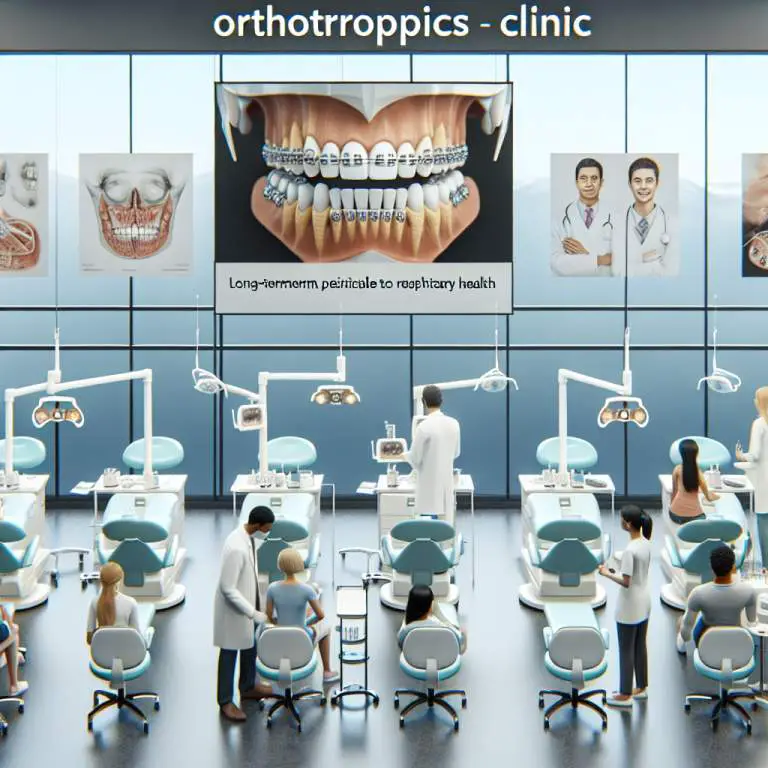How does consistent long-term mewing compare to orthodontic treatments?
Consistent long-term mewing can subtly alter the shape of your jaw and improve your facial structure by repositioning the tongue and applying pressure. However, it lacks the scientific backing and predictability of orthodontic treatments, which are designed to correct teeth alignment and bite issues more effectively and quickly. Orthodontics, guided by dental professionals, offer tailored solutions with visible results, whereas mewing’s outcomes vary greatly among individuals.

How Does Mewing Work and What Are Its Purported Benefits?
Mewing is a technique that involves placing your tongue against the roof of your mouth. This position is supposed to help with the structure of your face and jawline. People who support mewing say it can make your jawline look better and even help with breathing problems.
Some folks believe mewing can also change how your face looks by making your cheekbones more noticeable and improving the overall balance of your facial features. It’s like a workout for your face, using the muscles in a way that might lead to cosmetic changes over time.
What Are the Common Orthodontic Treatments and Their Objectives?
Orthodontic treatments, like braces or Invisalign, are used to straighten teeth and fix bite issues. Braces involve metal brackets glued to the teeth, connected by wires that an orthodontist adjusts periodically. Invisalign uses clear plastic aligners that you can take out when eating or brushing your teeth.
The main goal of these treatments is to improve how teeth line up together, which not only makes smiles look nicer but also helps with chewing and speaking. They can correct overcrowded teeth, gaps between teeth, and misaligned jaws. This leads to better oral health because straight teeth are easier to clean than crooked ones.
Can Mewing Achieve Similar Results to Braces or Invisalign Over Time?
Mewing advocates suggest that consistent practice can lead to changes similar to what braces or Invisalign achieve. They believe that by changing the tongue’s position and applying pressure over time, mewing can influence the alignment of teeth and jaw structure without needing traditional orthodontic devices.
However, it’s important to note that there isn’t much scientific evidence supporting these claims yet. Orthodontic treatments like braces have been studied extensively and are proven effective in correcting dental issues. Mewing might offer some benefits, but expecting it to replace braces or Invisalign might be optimistic.
What Are the Potential Risks or Downsides of Mewing Compared to Orthodontic Procedures?
Mewing is generally considered safe since it involves natural movements of the tongue. However, if done incorrectly or too aggressively, there could be potential risks such as jaw pain or misalignment issues worsening over time. Since mewing isn’t overseen by a professional like orthodontic treatment is, there’s a higher chance of doing it wrong.
Another downside is the lack of scientific evidence proving its effectiveness compared to traditional orthodontics. While braces and Invisalign come with their own set of risks, they’re well-documented procedures known for producing reliable results under professional supervision—something mewing doesn’t offer.
| Risks/Side Effects | Potential for developing TMJ disorders or improper swallowing habits if done incorrectly. Possible discomfort, pain from braces, risk of tooth decay if oral hygiene is neglected, and potential need for tooth extraction in crowded mouths. |
|---|---|
| Costs Involved | No direct costs unless consulting a professional for guidance. Can be expensive; costs vary widely depending on treatment length, type of device used (braces, Invisalign), and geographic location. |
| Long-Term Outcomes | Uncertain due to lack of long-term studies; potential benefits include improved facial aesthetics if practiced correctly. Predictable outcomes with lasting results including straighter teeth, corrected bite issues, improved oral health, and enhanced appearance. |
| Criteria | Mewing | Orthodontics |
|---|---|---|
| Definition | A technique that involves proper tongue posture to potentially reshape the jaw and align teeth naturally. | A branch of dentistry that corrects teeth and jaws that are positioned improperly using braces, retainers, and other devices. |
| Primary Goal | To improve facial aesthetics and structure through natural means. | To align teeth and correct bite issues for both aesthetic purposes and oral health. |
| Timeframe for Visible Results | Results may vary significantly; noticeable changes can take years and are not guaranteed. | Typically 1-3 years, depending on the complexity of the case and patient compliance. |
| Evidence Base | Limited scientific evidence supports its effectiveness in adults. More anecdotal than empirically supported. | Well-established with extensive scientific research supporting effectiveness in improving dental alignment and oral health. |
How Long Does It Typically Take to See Results from Mewing Versus Orthodontic Treatments?
Mewing results can vary greatly among individuals. Some people report noticing changes within a few months, while others may not see visible improvements for a year or more. The process is slow and requires consistent effort.
In contrast, orthodontic treatments like braces or Invisalign have a more predictable timeline. Patients typically wear these devices for 1 to 3 years, depending on the complexity of their dental issues. Regular adjustments by professionals ensure progress is steady and measurable.
Are the Effects of Mewing Permanent and How Do They Compare with Those of Orthodontic Treatments?
The permanence of mewing results is still a topic of debate among experts. For some, the changes achieved through diligent practice can last, especially if they continue to apply the principles of proper tongue posture and jaw alignment. However, without continuous effort, there’s a risk that old habits may return, potentially reversing any progress made.
Orthodontic treatments, on the other hand, often include a retention phase after the active treatment period. This phase involves wearing retainers to ensure that teeth stay in their new positions. With proper retainer use as directed by an orthodontist, the effects of braces or Invisalign can be very long-lasting, often permanent.
What Do Experts Say About the Efficacy of Mewing in Comparison to Traditional Orthodontics?
Many dental and orthodontic professionals remain skeptical about mewing’s effectiveness as a substitute for traditional orthodontic treatments. They argue that there’s insufficient scientific evidence to support mewing as an effective method for altering jaw structure or improving dental health in significant ways.
However, some practitioners acknowledge that maintaining proper tongue posture could contribute to overall oral health and potentially aid in minor cosmetic improvements. Still, they emphasize that severe misalignments or malocclusions require professional intervention through braces, Invisalign, or other orthodontic procedures for substantial correction.
Final Thoughts
Mewing presents an interesting concept that has captured the attention of many looking for alternative methods to improve facial aesthetics and structure. While it offers a non-invasive approach that anyone can try, its results and efficacy are not guaranteed nor universally recognized by dental professionals.
For those considering mewing as an alternative to traditional orthodontics, it’s important to set realistic expectations and understand that significant structural changes likely require professional intervention. Consulting with an orthodontist can provide clarity on what treatment options are best suited for individual needs and goals.







